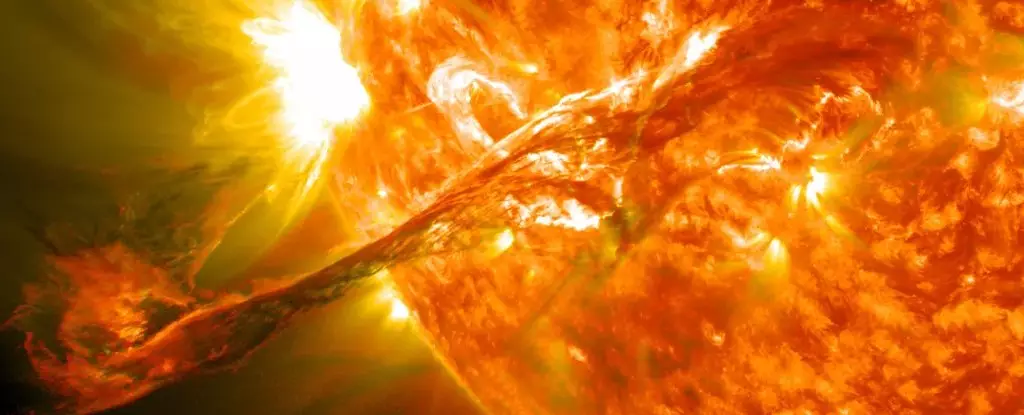The Sun, from a distance, appears serene and tranquil in our daily skies. But upon closer inspection, it is a maelstrom of solar activity, defying the expectations of astrophysicists. Andrew Gerrard, from the Center for Solar-Terrestrial Research at New Jersey Institute of Technology, explained that recent observations have contradicted assumptions about the Sun’s behavior during its current solar cycle. Solar cycles typically last for around 11 years, with the Sun oscillating between minimum and maximum levels of solar activity. The last solar cycle extended from 2008 to 2019, and we are currently in the midst of the latest cycle, approaching peak magnetic activity levels. However, the heightened solar magnetic activity in recent years has been so intense that it inhibits energy flow from deep within the Sun to its surface, resulting in cooler regions known as sunspots.
The Implications of Solar Activity Fluctuations
Sunspots, indicators of solar activity, play a crucial role in predicting solar flares and coronal mass ejections, both of which can endanger Earth’s technology and infrastructure. Solar storms can disrupt radio signals, power grids, GPS navigation, and even satellite operations. While not all sunspots result in eruptions, those that do pose a threat if they are directed towards Earth. Scientists like Alex James from the University College London underscore the importance of forecasting solar storms to mitigate potential damages. When solar flares and coronal mass ejections occur, they release high-energy particles that can cause geomagnetic storms when interacting with Earth’s magnetic field and atmosphere, resulting in phenomena like the aurora borealis and australis.
The surge in solar activity has already impacted Earth in various ways, affecting radio communications, satellite operations, and air travel. Geomagnetic storms triggered by solar events have led to radio blackouts across continents, disrupting GPS systems and causing power outages. Spacecraft are also at risk during heightened solar activity, as drag caused by increased atmospheric density can bring down satellites. Recent incidents involving Starlink satellites falling from orbit due to geomagnetic storms underscore the vulnerability of space technology to solar disruptions. As our reliance on satellite technology grows, so does our susceptibility to the effects of solar maximum.
Predictions point towards a continued rise in solar activity until it reaches its peak levels, known as solar maximum. Scientists suggest that this cycle’s solar maximum, expected in the second half of 2025, may be stronger than anticipated initially. However, despite the heightened activity levels, researchers like Mathew Owens caution that the current cycle remains within historical averages. The unpredictability of solar activity poses challenges for scientists aiming to forecast and mitigate the impact on Earth’s technology and infrastructure. As we become increasingly dependent on satellite technology, the consequences of solar storms during solar maximum may be more severe than ever before.


Leave a Reply